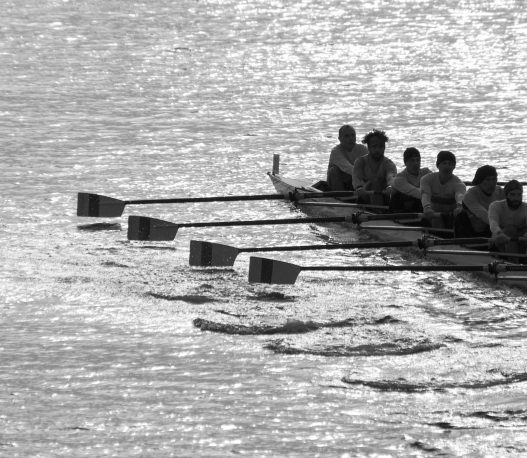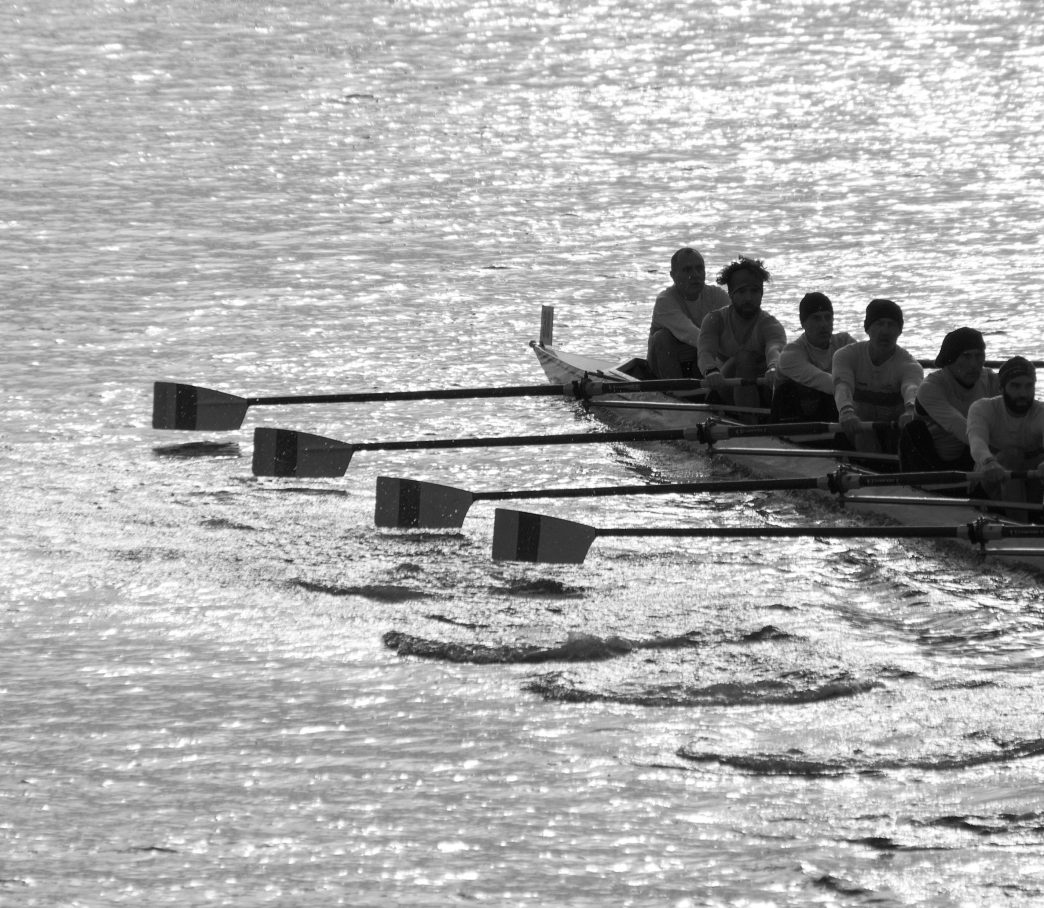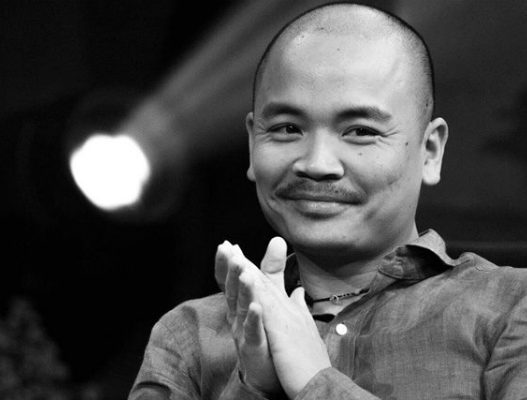Rowing, in its modern incarnation, traces its roots back to the grand rivalry between Oxford and Cambridge. The first regatta between the two prestigious English universities was held in 1829 on the River Thames, shifting the perception of the sport as an amateaur competition among the working class watermen of London, to a fixed symbol of the elite.
The event was later replicated in the United States, when on 3 August 1852 Harvard and Yale held their first head-to-head regatta, the oldest intercollegiate sporting event in the United States. The sport grew rapidly in its popularity and witnessing soon thereafter a proliferation of rowing clubs across the United States and Europe.
There is a highly theatrical element to a regatta. Smartly dressed rowers sit in slender shells, while adorning spectators intensely watch as rival boats battle out to see which crew has the best technique, strength, and mental fortitude. Some races finish with one boat having a commanding lead, others can be as close as a fraction of a second.
An oft missed observation about rowing, however, is the inherent musicality of the sport, as it is a symphony of diverse movements in which each oarsman, like each musician in an orchestra, plays their respective part, creating a unique synthesis – a harmonious piece, a rhythm, a swing – when mastered, it elicits an intense, quasi euphoric, feeling.
One of the finest examples of this symbiosis can be found in Bach’s Brandenburg concertos, often held as the pinnacle of Baroque music. The German composer was a master of counterpoint and harmony – and tenaciously believed that mastering harmony was attainable. In the first movement of Brandenburg Concerto No. 3 in G Major (BWV 1048), there is never a lull – just a steady movement, each note playing off of each other. It’s melodic and dialogic, allowing for a delicate interplay and communication between the instruments and creating multidimensional and textured compositions.
Bach’s polyphony, while rich in ornamentation, never wastes any space – each chord serves a purpose. And, while showcasing supreme mathematical logic, the music is never cold; rather, it is warm and raises our senses to contempt on a higher order and ideal.
It is against the backdrop of the famed early 18th century concertos that we can begin to understand the sport of rowing. While there is a technical precision inherent in the sport, there is also an understated elegance. From the finish, the hands are cast over the knees and then the back moves into a forward 45 degree angle position. The hips start to open, giving way to a subtle lifting of the shoulders, and then there is the rolling of the wrists as one prepares to cut the water with the blades. Once fully extended at the catch, there is the explosive sprint off the footstretcher, propelling the boat forward, where the only sound is the slide of the seat and the boat as it glides across the water. A movement so powerful, and forceful, is also so sophisticated.


The rower is ever conscious about the cadence between each and every movement that comprises the stroke, ensuring that there is a seamless transition. At the same time, he is focused on keeping tempo – in rowing timing is everything, as one rushed movement, however slight, can throw off the entire equilibrium of the boat.
From a third person perspective this motion looks smooth and rehearsed, and at an elite level almost effortless. Yet, what differentiates good rowers from exceptional rowers is the recognition that strength and form are coequal in moving the boat.
Thus to master the art of rowing, as it is indeed an artform, requires determination, perseverance, self-awareness, as well as finesse and patience. But, perhaps most importantly, it requires a tireless commitment to pursuing perfection – an unattainable result, but nonetheless an ideal to which we hold ourselves, a measure by which we can continuously find new ways to improve.
The rower must always be relaxed, never tense. He has to learn to be adaptable amid often unpredictable and unforgiving conditions; this requires trust in oneself and in the crew. Herein lies a paradox of rowing: as much as each rower is accountable for his own form and conditioning, like a musician in an orchestra, the rowers in the boat have to adopt and respond to each other in order to arrive at a near perfect synchronicity and to create a new collective consciousness.
A normal race is only 2,000 meters in distance and typically takes less than eight minutes to complete — months of training and sacrifice for eight minutes of racing. When you sit ready, bodies perfectly aligned at the start, and then you hear the gun go off, announcing the beginning of the race, for those eight minutes there is no other thought. The crew rows at the designated rate, sticking to a predetermined race plan, while the coxswain calls the commands. There is a collaboration between the two, one that is predicated upon a trust and underscored by prudence, especially on the part of the coxswain who must ascertain the best course of action and push the physical, and psychological, limits of the crew.
The lactic acid builds up, you want to give in, you want to stop, but you can’t because in the boat you’re no longer an individual, but a collective unit. And even if the result of the race is not what you had hoped for, there is a satisfaction of finishing, as the sensation is akin to surviving – often just barely.

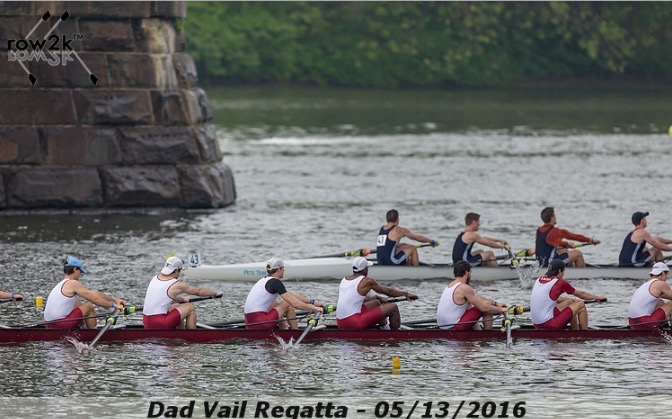
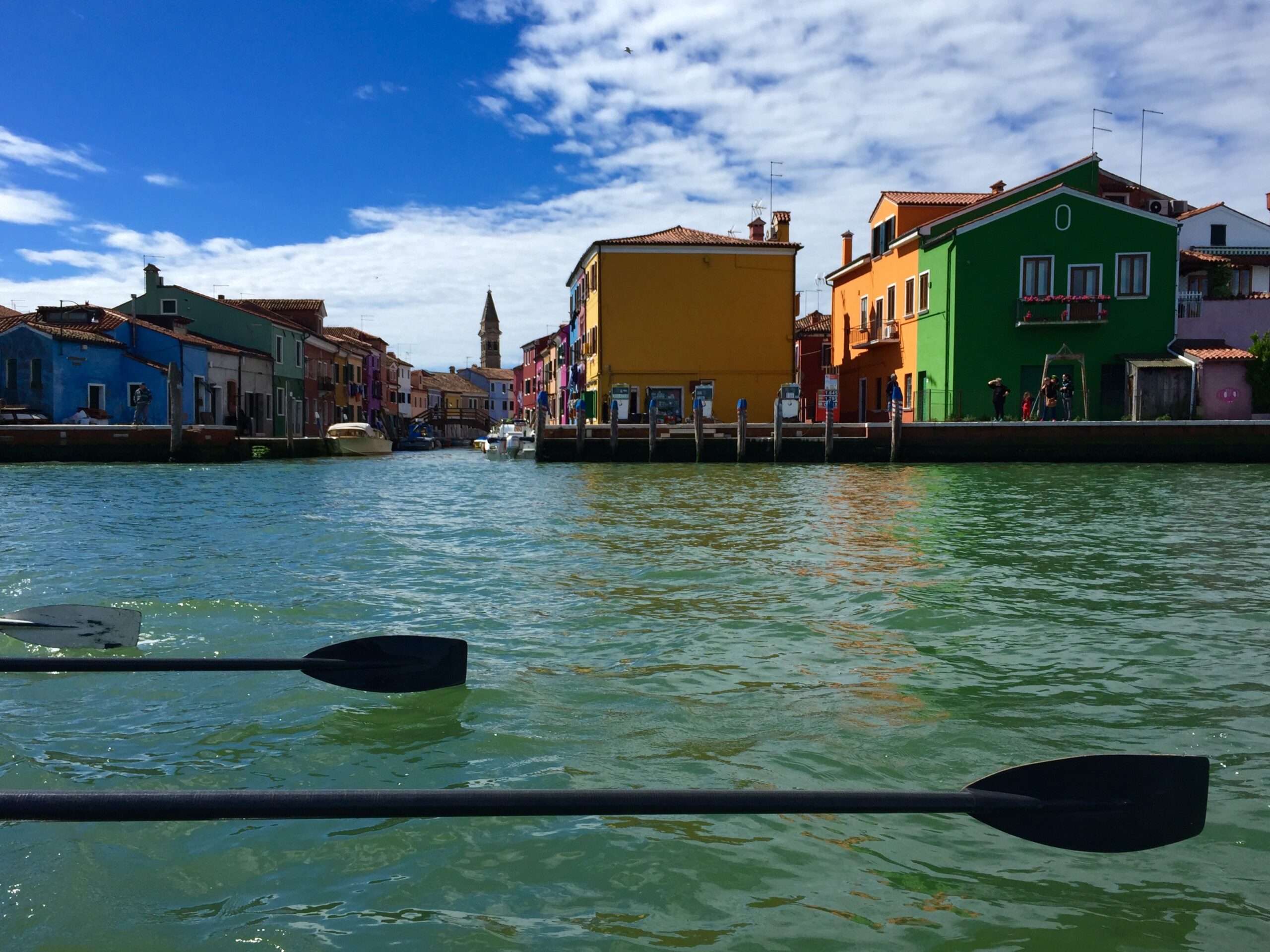
While my days of racing are past, my commitment to the sport has grown. I now go out in the single scull, which many consider to be the hardest boat to master. The difficulty stems from the inherent sensitivity of the boat. I alone am accountable if the boat lists either to port or starboard, if the stroke is too short, or if blades dig too deep into the water. There is also the added factor of applying different amounts of pressure from the oars to steer the boat, since there is no coxswain to indicate the path forward – in sculling one has to develop a new spatial awareness, which requires mental acuity.
Rowing is an essential part of my day. But it is never a routine, it is a ritual. As I descend down the ramp and enter the steely blue boathouse that sits on the bank of the Tiber, I prepare the single, ensuring that it is properly rigged. I place the slender white shell in the water, insert the oars, and fasten the oarlocks. I step into the boat and then push off the dock to begin my row upriver towards Ponte Milvio.
Once I have properly warmed up, I change course to start rowing towards the city center at a steady rate of 24 strokes per minute. After passing under Ponte Sant’Angelo, I take the final stroke and check the boat. I enjoy a moment of silence and gaze up at the beauty around me – a sight however familiar, is never banal. Rome has this ability, to make one pause, reflect, and ponder at its two millennia of history and perennial beauty. It is an awe inspiring and humbling experience, for many dream of being able row down the storied river once in their lifetime, and I have the privilege of doing it everyday.
The Tiber is a unique river, not only because it weaves through the echoes of an ancient empire and under the shadows of the artistic brilliance of the high Renaissance – but, like the sport itself, it is technically challenging due to its serpentine configuration and its unforgiving and capricious currents. And yet down on the Tiber, the chaos of the streets above, the quotidian responsibilities from work, all of the intrusive thoughts, subsides into a distant murmur.
Whether during a pause or while in motion, it becomes a meditation, a way in which I can make order out of chaos. When I enter that meditative state there are no other thoughts, just a laser focus on the boat, the stroke; it is a quasi transcendental experience where time and space evaporate – the peripheral vision subsides until the singular point of reference in the tapered stern.
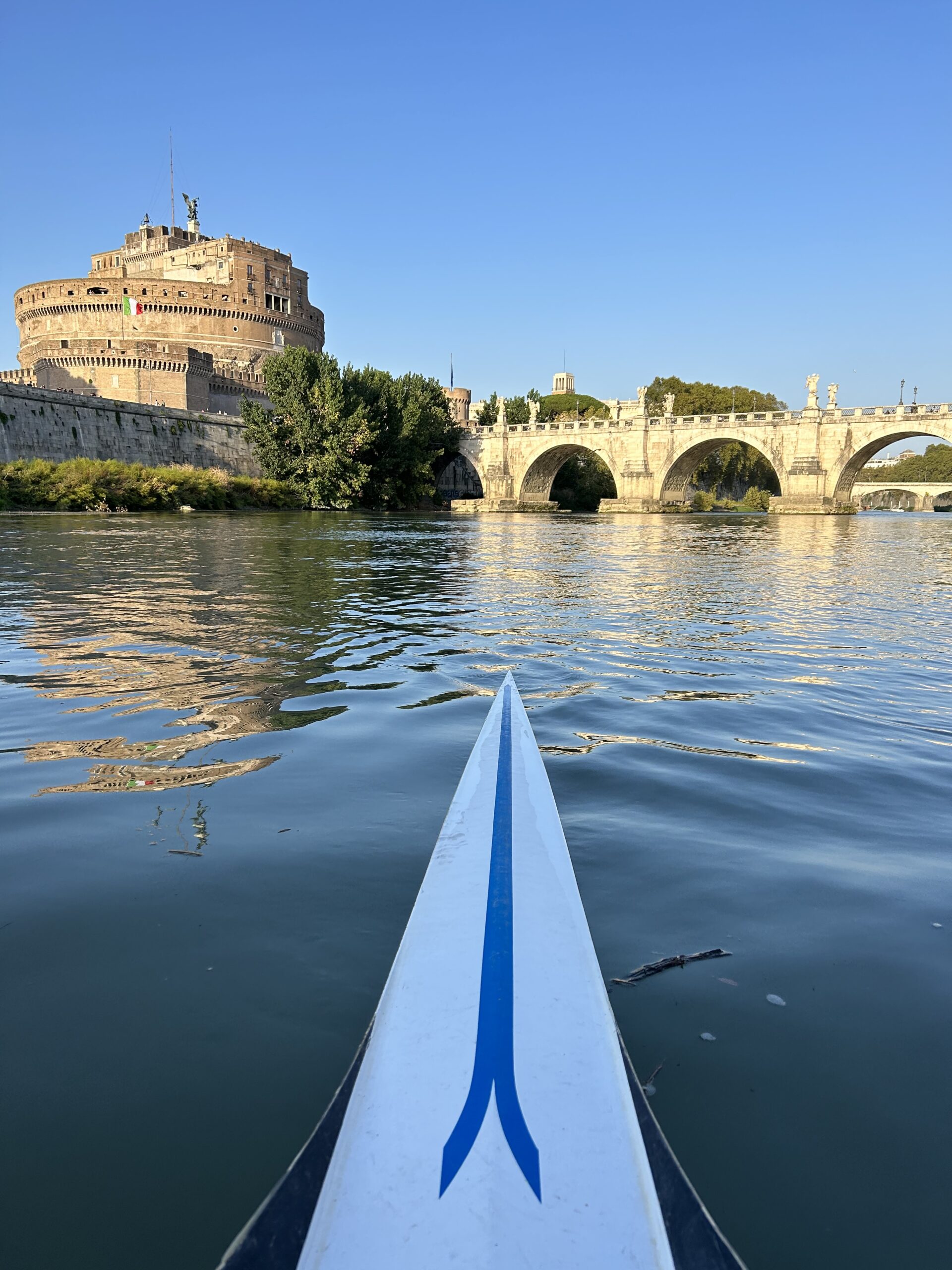
Over the past ten years rowing has taught me to let go of expectations and how to live in the present moment. This becomes a truly liberating process – one that brings greater wellbeing and even self-actualization – especially today as we are inundated with information and overstimulated with social media and technology.
But, perhaps the most important lesson that it has instilled is that progress is never linear. There are moments of joy and triumph, as well as frustration and defeat. Whether the outing went well or poorly, I reminded myself of the ideal to which I aspire, the core belief that I can always improve. It is this sport, which is as much a physical as a psychological endeavor that has given me so much and helped build a greater self-efficacy. It is this creed, this profession of faith, which impels me to get back in the boat each and every day.

John Keates opened his 1818 poem Endymion writing “a thing of beauty is a joy for ever: its loveliness increases it will never pass into nothingness.”
The Romantic poet was commenting on the permanence of beauty – the very essence of beauty – as it is not an ephemeral sensation, but something once perceived, or experienced as beautiful, remains a font of joy forever. He put a high degree of faith in beauty, which also has a seductive lure to it.
Each one of us must find this eternal wellspring of beauty in our life – something that brings peace, pleasure, and that guides us and provides us with an ideal – and for me that is rowing.









